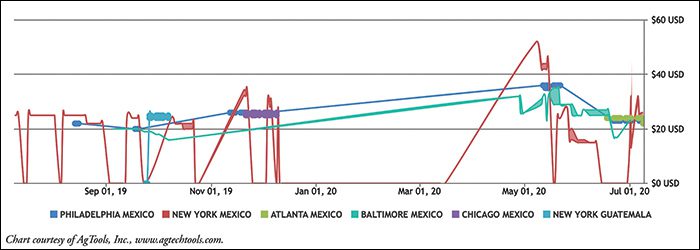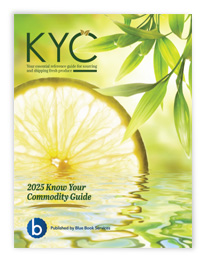Rambutan Market Summary

Image: Aripai Leangphet/Shutterstock.com
Rambutan Market Overview
Rambutan trees can grow to a height of 50 to 80 feet with a straight trunk that can reach up to 24 inches in diameter with dense canopy. The fruit, also called rambutan, is oval in shape and varies in color from pinkish-red or dark purple to orange-yellow, though it is most recognized by its vibrant pink color. The fruit is native to Malaysia and covered in spiny hairs, hence its name from the Malay word for hair, rambut. Rambutan peels much like a hard-boiled egg—break the outer shell and peel back the spiny outer covering to reveal the aril (the fruit itself ) inside. The aril contains a small, bitter tasting seed that is typically discarded and not eaten with the fruit.
Types & Varieties of Rambutans
Detailed information on rambutan is difficult to come by. There appear to be two main types of rambutan, red and yellow. Red varieties are medium in size and ripen in September or October; the aril is white, dry, and sweet. The yellow varieties are somewhat smaller in size and ripen in October; arils are white, juicy, and sweet. Red varieties include Queen Zaida, Princess Caroline, Roxas, Laurel, Sr. and Ponderosa Ferreras. Yellow varieties include Quezon, Zamora, Quirino, Santo Tomas, and Victoria. Size of the fruit, sweet/tartness, and flesh color differ by variety.Cultivation of Rambutans
Rambutan trees prefer well-drained soil, warm temperatures, high humidity, and plenty of rainfall. Trees should be placed 30 to 40 feet apart as overcrowding will affecting production. Early pruning encourages trees to grow tall and straight, and removal of twigs after harvest will stimulate new growth. Remove dead branches regularly and mulch during dry periods. Fertilizer should be applied after fruit set (or flower budding), immediately after harvest, then again a few months later.



